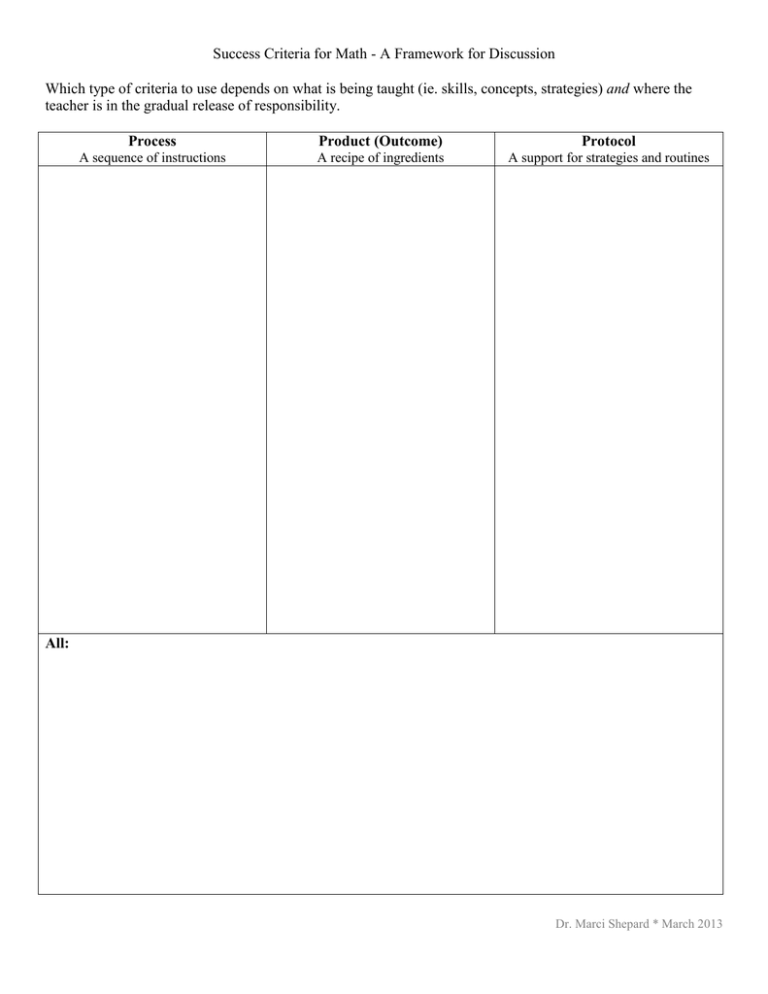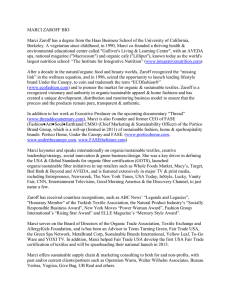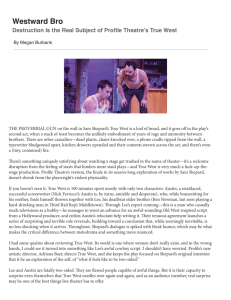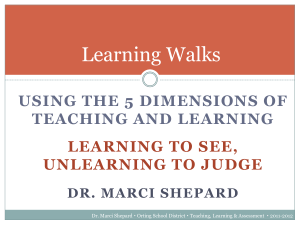Success Criteria for Math
advertisement

Success Criteria for Math - A Framework for Discussion Which type of criteria to use depends on what is being taught (ie. skills, concepts, strategies) and where the teacher is in the gradual release of responsibility. Process Product (Outcome) Protocol A sequence of instructions A recipe of ingredients A support for strategies and routines All: Dr. Marci Shepard * March 2013 Success Criteria for Math - A Framework for Discussion (with Marci’s annotations) I’ve been getting a lot of questions about what success criteria looks like in math classes beyond telling the process for a skill or procedure. I’ve done some research and think that we can package success criteria for math into three “buckets.” (See examples of each on the following pages.) Which type of criteria to use depends on what is being taught (ie. skills, concepts, strategies) and where the teacher is in the gradual release of responsibility. Process Product (Outcome) Protocol A sequence of instructions A recipe of ingredients A support for strategies and routines Possible responses: Possible responses: Possible responses: May work best for skills or May work best for concepts, Aids in establishing classroom algorithms inquiry or problem-solving culture Following steps ensures Is a list or menu in no Fosters explicit teaching of success and often ensures particular order routines or strategies quality Were often once separate skills Allows students to or things learned (process independently use routines or Helps teachers think through how to teach it success criteria) strategies Serves as a scaffold Communicates expectations for Promotes working walls and quality visibility of work/thinking Differentiation tool Embeds Standards for Provides accessibility of Causes student reliance Mathematical Practice content/resources Discourages divergent thinking Leave “tracks of thinking” or approaches when they are class-created Restrictive to students who Supports students in disciplinedon’t need to do all steps specific habits of thinking Teachers and students can Serves as scaffold identify where understanding breaks down Provides paras with content support and fosters consistency of communication to students All: Paints a picture of what quality is Demystifies the learning Helps teachers and students focus on learning versus work Reminds students of aspects of the task they should focus on Creates ownership when students generate SC (ie. using exemplars, modeled process, remembering key points) Allows students to have a sense of control over their work and success Positively impacts motivation and efficacy/self-esteem Allows students to self-assess Helps teachers and students provide focused, descriptive feedback Fosters building time in for structured reflection and closure (ie. Find one example you’re really proud of. Circle it and tell the person next to you why you are pleased with it; Decide with your talk partner which success criteria you were most successful with and which one needs help or could have been taken further; You have 5 minutes to find one place where you could improve. Write your improvement at the bottom of your paper; What approach did you take with the problems you were most successful with today?) Dr. Marci Shepard * March 2013 Process examples: Dr. Marci Shepard * March 2013 Product (Outcome) examples: Dr. Marci Shepard * March 2013 Protocol examples: Dr. Marci Shepard * March 2013


